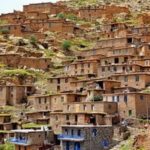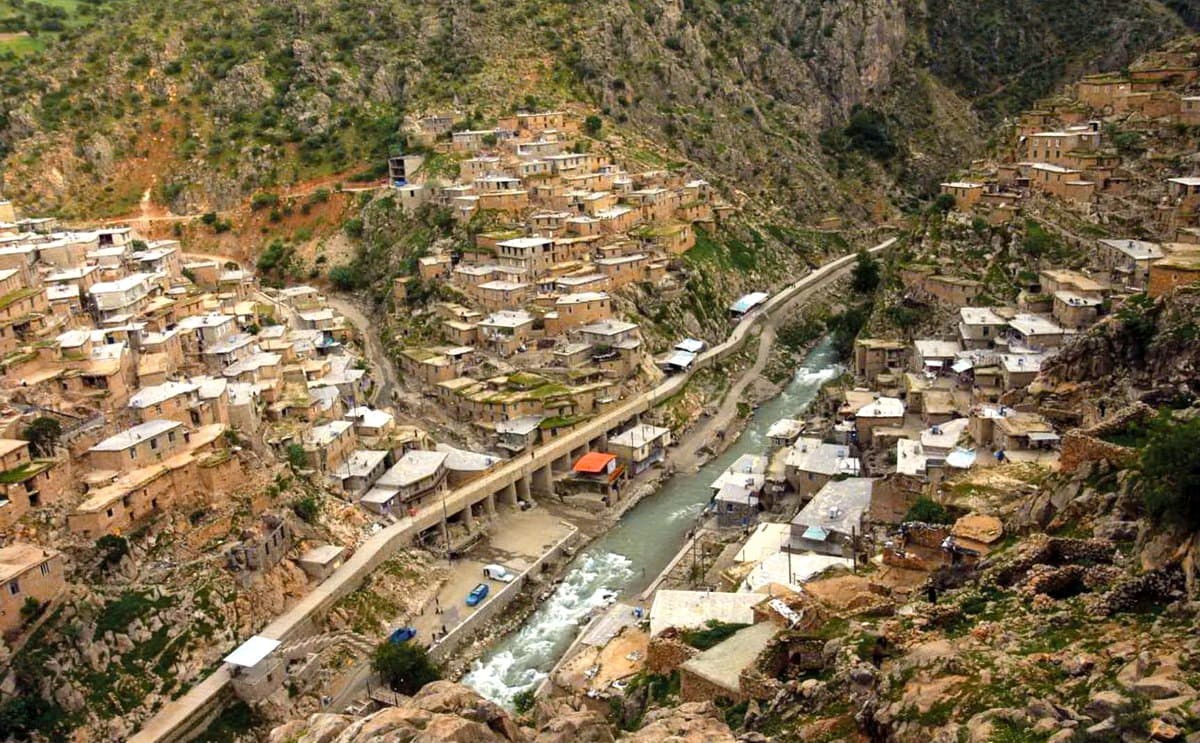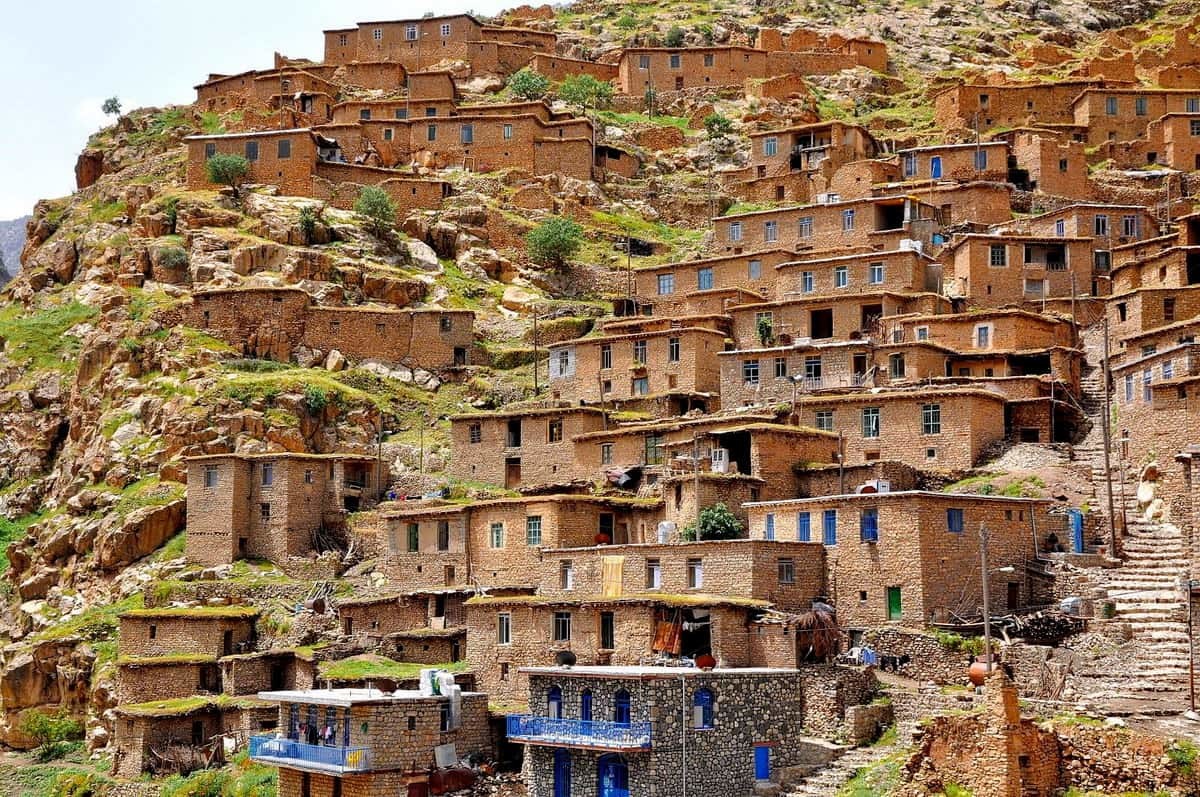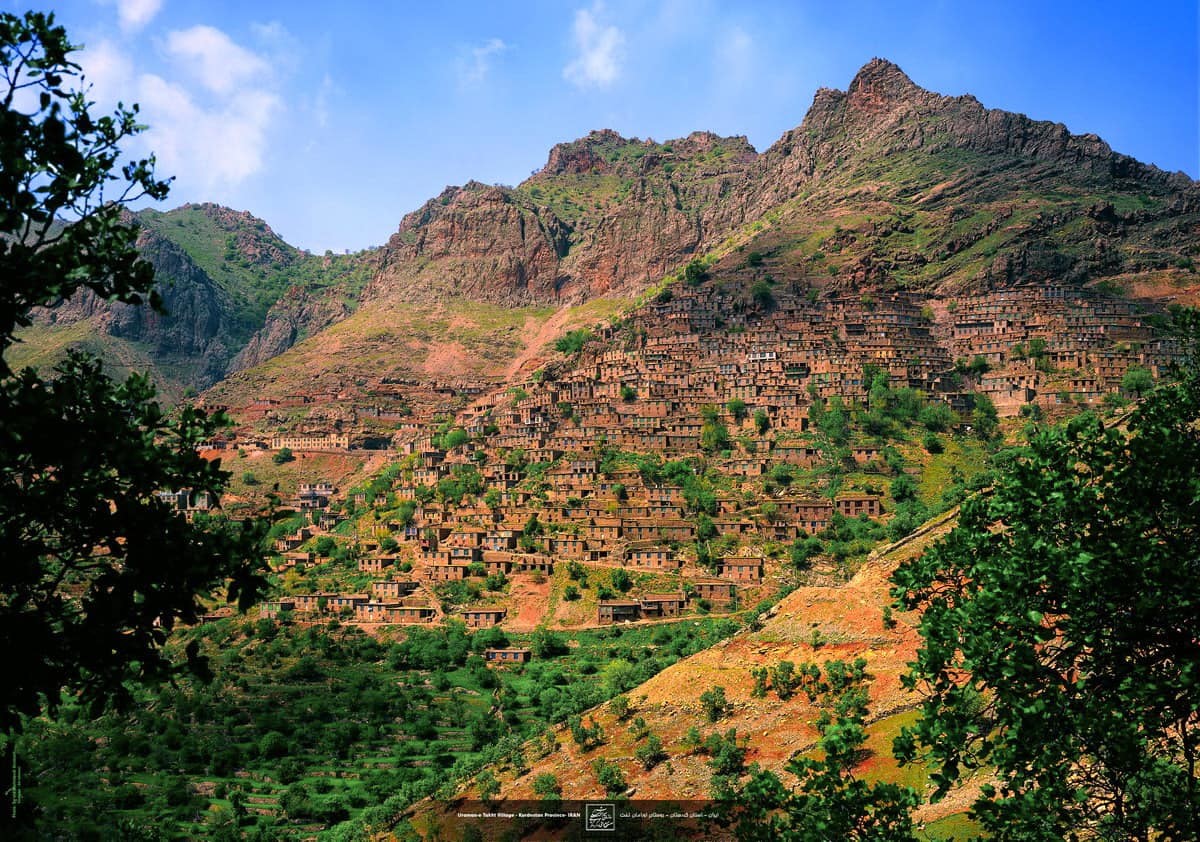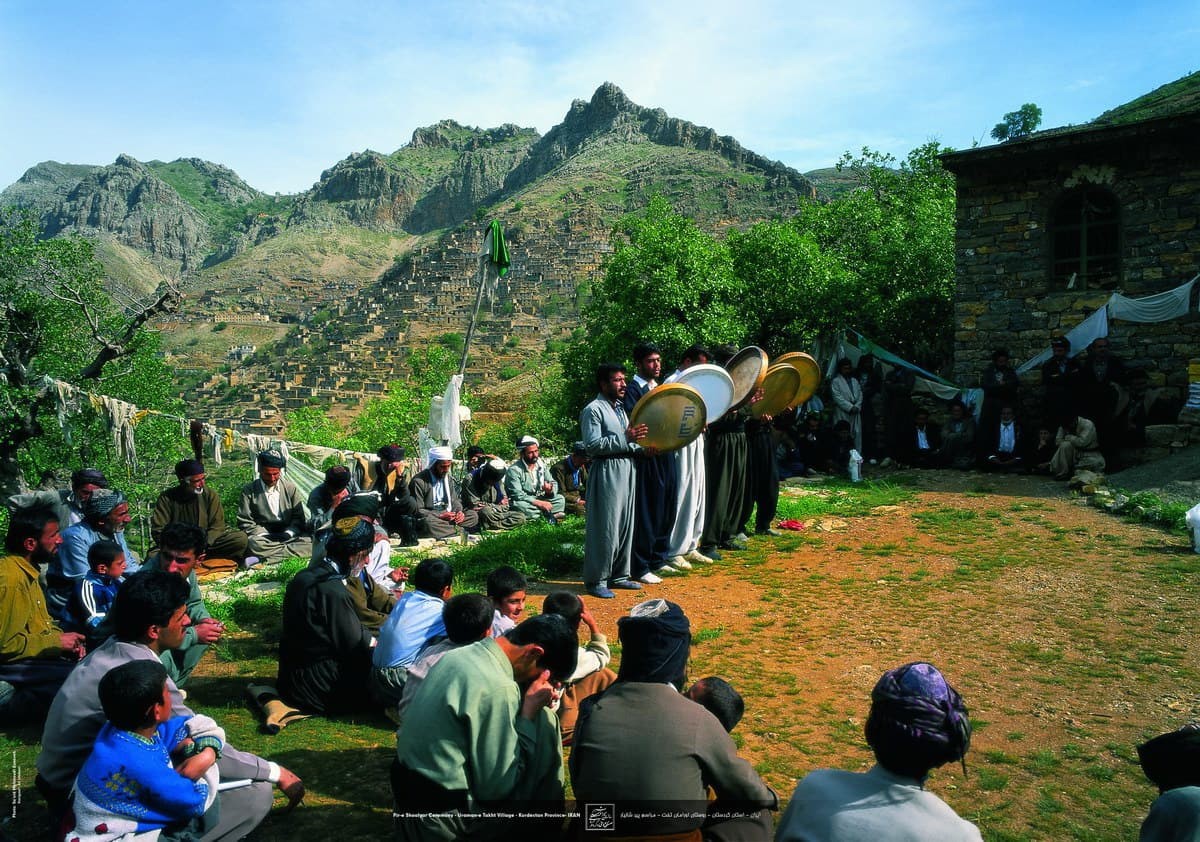Palengan
Palengan is a village in the rural district of Zhāvehrud, in the Kāmyārān area located at the beginning of the Orāmānāt area (Kurdistān region). In the course of its history, it has been destroyed and rebuilt several times but currently, despite the passing of a few centuries, it is still standing and hosts foreign and local tourists who go to this region to admire its beauty.
Considering the remains of mosques, ancient houses and the beautiful gardens of this village, it seems that its foundations date back to the Samanid period. Furthermore Pālengān has a very old cemetery in which there are some tombstones with Kufic calligraphy (relating to the seventh or eighth century of the Hegira).
At the distance of 800 meters south-east of this village in a very narrow canyon there are the ruins of a very ancient fortress where rooms, hearths and ancient bridges can be observed. The village we see today is one or two kilometers from the ancient Pālengān and has about 500 years.
It is among the villages with a terraced conformation, or the roof of the lower house constitutes the courtyard of the upper one and in addition to the interesting and unique architecture, in the surroundings there is a luxuriant nature with various springs and waterfalls.
The materials of most of the houses in this village are local; that is, they are made of stone, straw and mud and the walls of some of them have been built dry. This village is divided in two by a river that runs in the center.
In addition to agricultural products, dairy products and honey and fish farming, the source of income of the local inhabitants is the manufacture of giveh, typical colored cotton slippers, from the weaving of rugs, and from the stitching of sheep wool fabrics.
The mild spring of this area attracts nomads here who are the protagonists of interesting traditional rituals that are very popular among tourists. On the attribution of the name Pālengān to this village there are several theories like: the presence of a leopard in the village and in the surrounding mountains, the presence of a strong power center in this village, "Pāl" which in Kurdish and local dialect means to lean etc. ..

